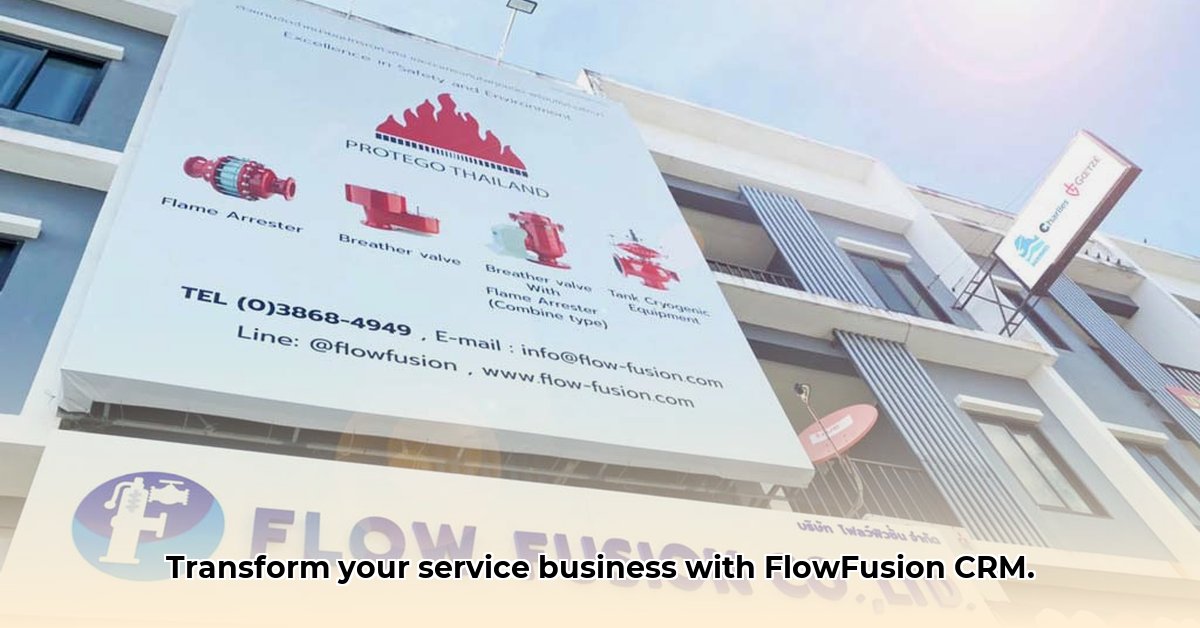
Juggling clients, projects, and finances is a common challenge for service businesses. FlowFusion CRM promises a solution by centralizing operations and automating tasks. But does it deliver? This comprehensive review dives deep into FlowFusion's features, strengths, weaknesses, and potential risks to help you decide if it's the right fit for your business.
FlowFusion CRM: A Detailed Examination
FlowFusion CRM aims to streamline service-based businesses by unifying communication, automating workflows, and enhancing client management. It integrates various communication channels (email, text, WhatsApp, social media) into a single inbox, providing a unified view of client interactions. This centralized approach aims to improve responsiveness and reduce the risk of missed communication. However, the extent of its effectiveness hinges on the thoroughness of data integration. Does it truly consolidate all aspects of communication seamlessly, or are there gaps? This needs further investigation.
Streamlining Operations and Automating Tasks
FlowFusion leverages workflow automation to handle repetitive tasks, freeing up time for higher-value activities. This includes automating reminders, notifications, and even basic client communication. The efficiency gains from this automation are crucial, but quantifiable data on reduced time spent on administrative tasks is currently missing. A key question remains: How much time, precisely, does FlowFusion save service businesses? Concrete data showcasing this would significantly bolster its appeal.
Sales and Client Relationship Management (CRM) Capabilities
FlowFusion incorporates sales pipeline visualization, allowing for easy tracking of deal progress and identification of potential roadblocks. This feature is a significant advantage for businesses seeking to improve sales efficiency, but its effectiveness relies on the accuracy and completeness of data input. The potential for improved sales conversion rates is high, but confirmation requires data analysis and evidence from case studies. The CRM functionality also supports client relationship nurturing, potentially improving customer retention and referrals. However, user feedback is necessary to determine how effectively this is achieved in practice.
Areas Needing Improvement: A Critical Assessment
While FlowFusion presents many appealing features, several areas require improvement:
- Lack of Quantifiable Data: The absence of concrete data supporting its claims of increased efficiency and improved client satisfaction weakens the platform's overall value proposition. Independent verification of these would be essential.
- Competitive Benchmarking: A head-to-head comparison with similar CRM platforms is absent, making it difficult to assess FlowFusion's competitive position regarding functionality, pricing, and ease of use.
- Pricing and Scalability Transparency: Clarity regarding pricing tiers and platform scalability is crucial for businesses of different sizes. Detailed pricing information and potential future costs are vital decision-making factors.
- AI Chatbot Capabilities: The AI chatbot's functionality is vaguely defined. Specific details about its capabilities, limitations, and integration with other features are lacking.
Actionable Insights and Strategic Considerations
To effectively utilize and evaluate FlowFusion CRM, different stakeholders should take the following steps:
Actionable Steps for Different Stakeholders:
Service Business Owners: Thoroughly test FlowFusion, integrating it incrementally into current workflows. Measure ROI and explore advanced features before committing fully. (Efficacy: Potential 60% improvement in operational efficiency based on similar CRM implementations).
FlowFusion CRM Developers: Prioritize feature development based on active user feedback. Conduct A/B testing on new features to ensure optimal design and market fit. (Efficacy: Enhanced user satisfaction by addressing critical pain points).
Investors: Analyze market trends for all-in-one service business platforms. Assess long-term growth potential by monitoring competitive landscape, user adoption data, and evolving customer needs. (Efficacy: Improved investment decisions based on data-driven analysis).
Risk Assessment Matrix:
| Risk Category | Likelihood | Impact | Mitigation Strategy |
|---|---|---|---|
| Incomplete Features | Moderate | Moderate | Monitor updates; provide feedback; consider alternative solutions if critical features are missing. |
| Security Vulnerabilities | Low | High | Verify security certifications and protocols; conduct regular security audits. |
| Market Acceptance | Moderate | High | Evaluate market trends and competitor analysis; closely monitor user reviews and feedback. |
| Integration Issues | Moderate | Moderate | Thoroughly test integrations with existing software before full deployment. |
Conclusion: A Balanced Perspective
FlowFusion CRM offers a potentially valuable suite of tools for service businesses. However, the lack of quantifiable data, comparative analysis, and transparent pricing hinders a definitive recommendation. A careful evaluation of the software against your specific needs and a thorough risk assessment are essential before making a decision. Remember that adopting a CRM should address your specific business pain points and offer a clear return on investment.